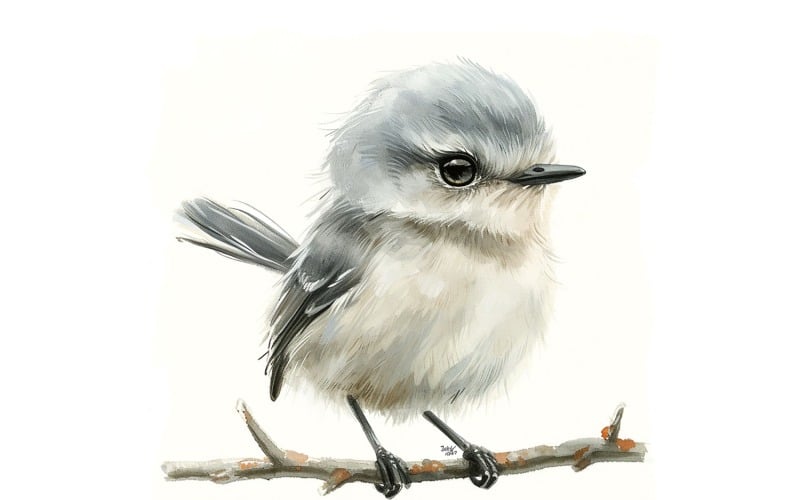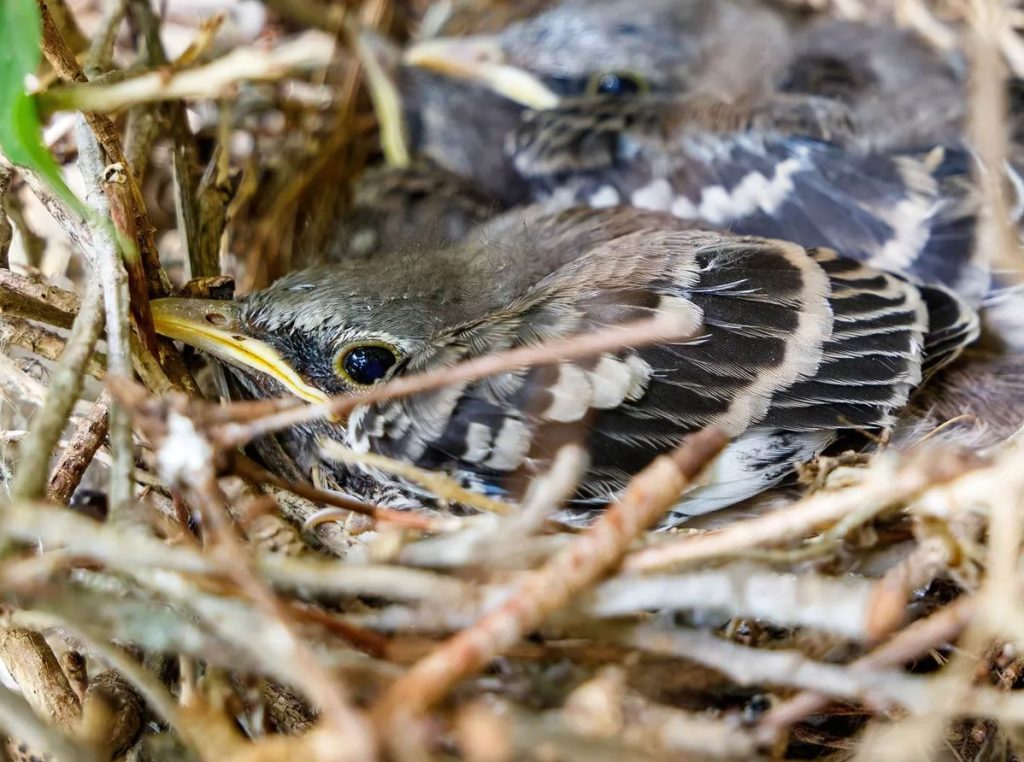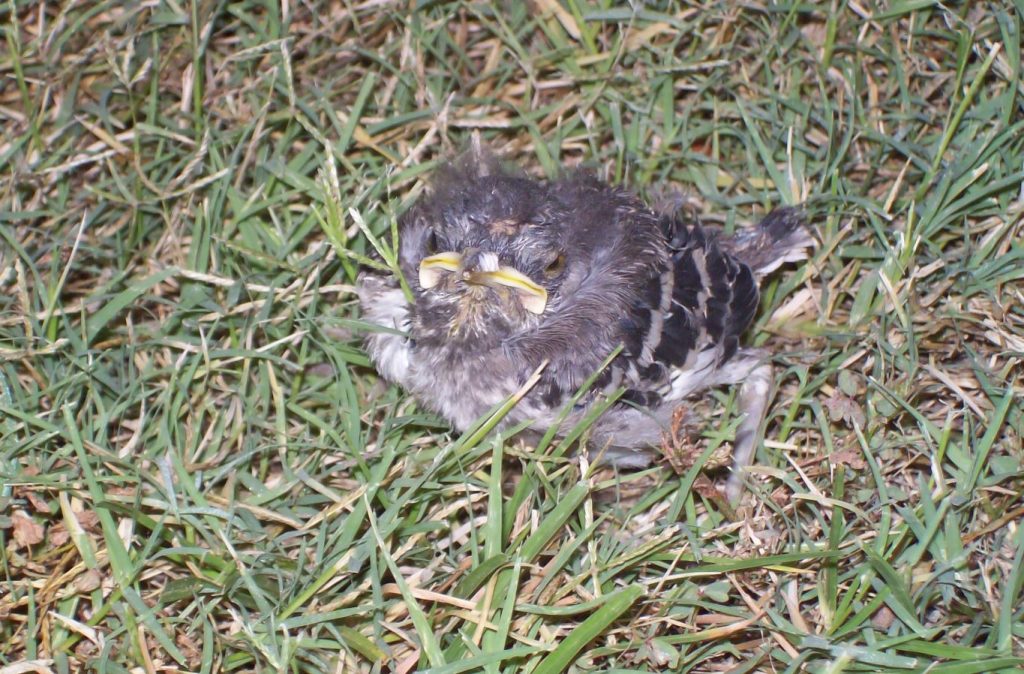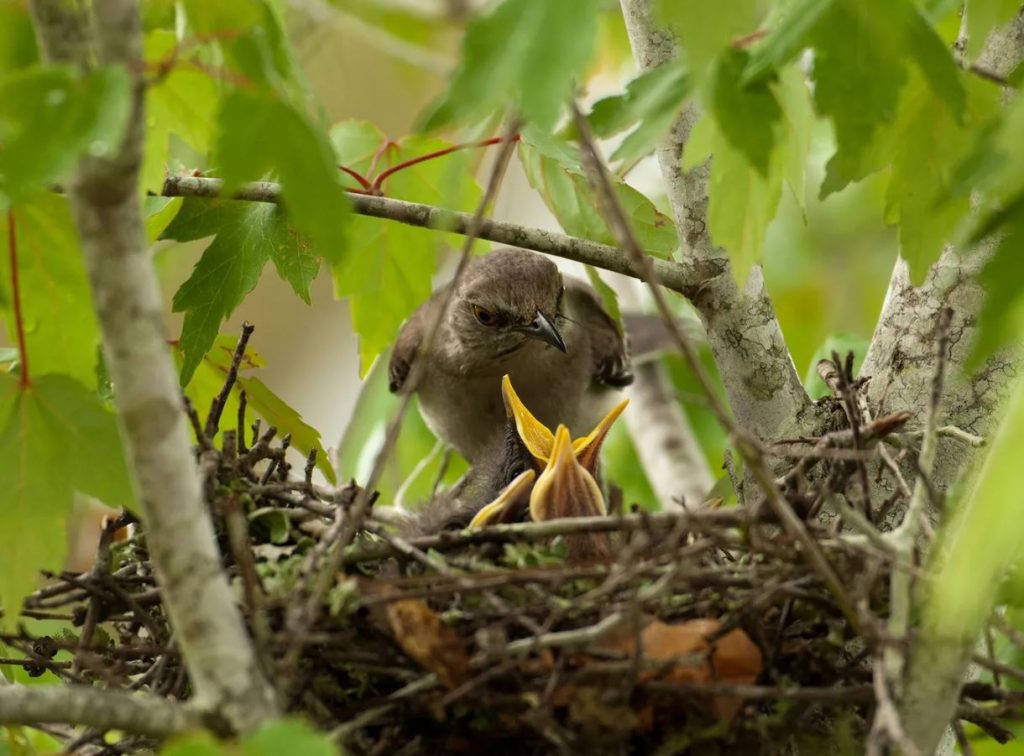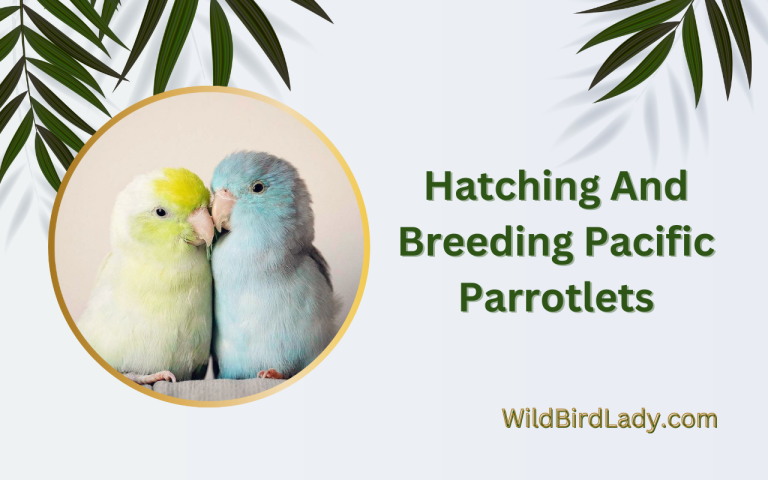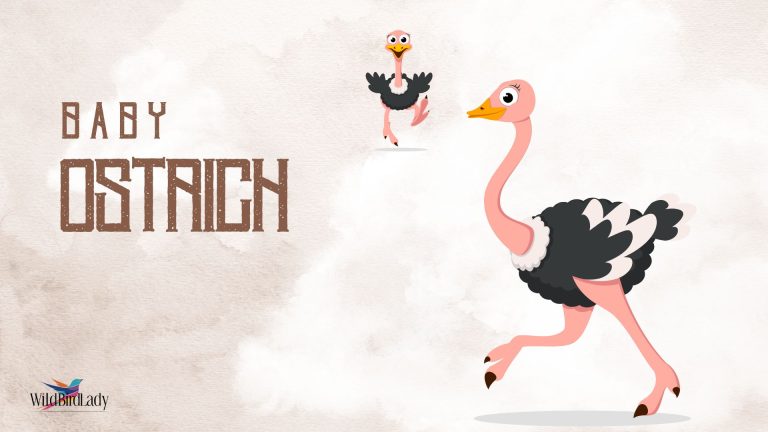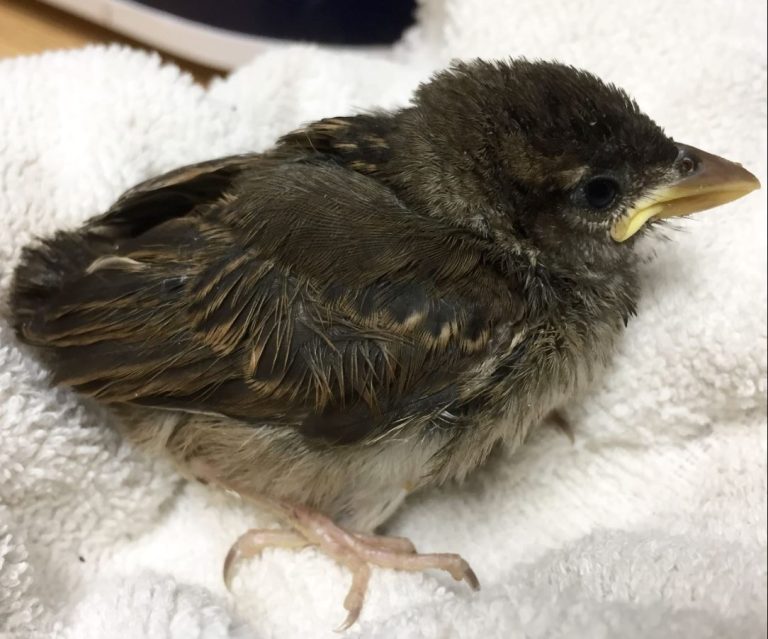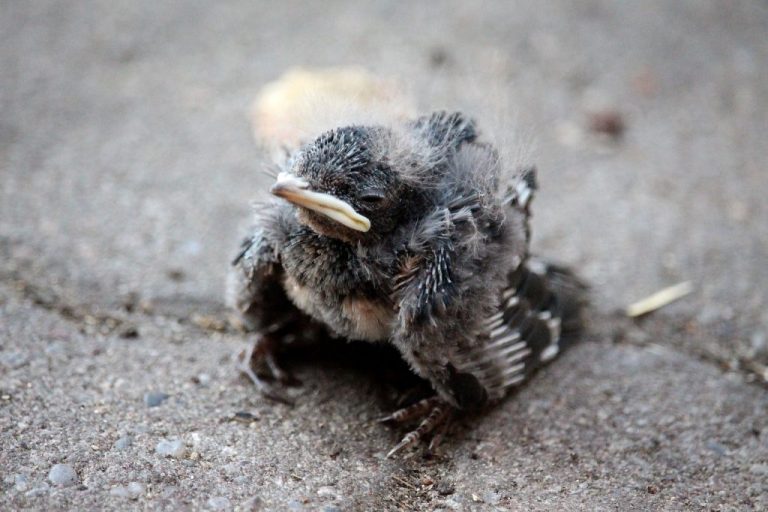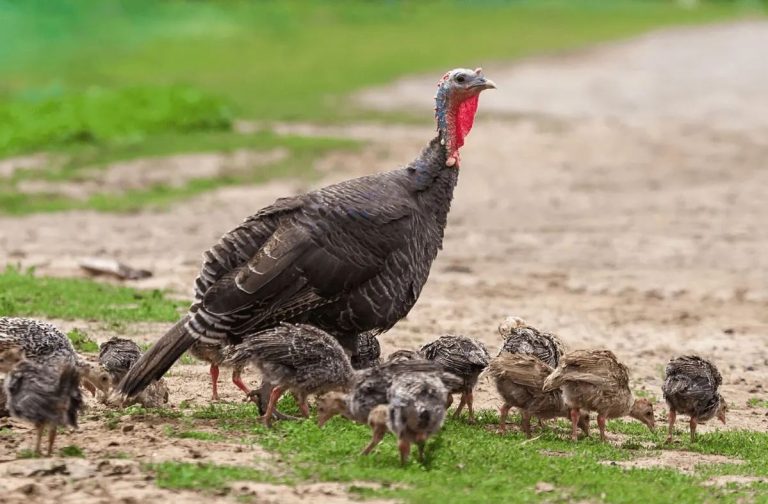Baby Mockingbird: Identification, Care, and How They Grow
Over the years, I’ve had the pleasure of observing Northern Mockingbirds (Mimus polyglottos) across backyards, fields, and suburban parks. But few sights stir my heart like that of a baby mockingbird—those fluffy, fragile creatures with oversized beaks and a fierce will to grow. They may look helpless, but they’re born with the potential to become some of the most talented singers in the avian world.
In this guide, I’ll walk you through everything I’ve learned about baby mockingbirds—from how to identify them, what they eat, to how you can help if you find one. Whether you’re a backyard birder or a wildlife enthusiast, understanding the early stages of these songbirds brings you closer to appreciating their remarkable journey.
What Is a Baby Mockingbird?
A baby mockingbird is the juvenile form of the Northern Mockingbird, a songbird found throughout North America. These birds go through several stages of growth:
- Hatchlings: Newly born, naked, blind, and completely dependent on their parents.
- Nestlings: Still in the nest, with sparse down and closed or newly opened eyes.
- Fledglings: Feathered, mobile, and learning to fly. They often hop or flutter outside the nest but still rely on parents for food.
Recognizing these stages helps bird lovers and rescuers avoid mistakenly “rescuing” fledglings who are simply learning the ropes of flight.
Life Cycle of a Young Mockingbird
The mockingbird breeding season typically spans from late March to August, though in warmer climates, it can begin earlier. Here’s a quick timeline:
| Stage | Timeframe | Key Features |
|---|---|---|
| Egg-laying | 3–5 eggs laid | Pale blue-green with brown markings |
| Incubation | 12–13 days | Only the female incubates the eggs |
| Hatchling stage | 0–3 days old | Blind, featherless, helpless |
| Nestling stage | 3–12 days old | Start growing feathers, eyes open |
| Fledgling stage | 12–15 days+ | Leaves nest, learns to fly, fed by parents |
What Do Baby Mockingbirds Look Like?
As someone who has observed countless baby mockingbirds, I can tell you they change rapidly.
Nestlings:
- Tiny and pinkish with closed eyes
- Sparse down feathers
- Bright yellow gape (mouth edges)
Fledglings:
- Fluffier with grayish plumage
- Short tail feathers
- Still have a yellow gape
- Can hop or flutter short distances
- Make loud begging calls
Their coloration blends well with the ground and foliage—an important defense during the vulnerable early days outside the nest.
Nesting Habits of Mockingbirds
Northern Mockingbirds are prolific nesters. They can raise 2 to 4 broods per season, especially in southern climates.
Nest Details:
- Constructed by both parents
- Built in shrubs, small trees, hedges (3–10 feet off the ground)
- Made of twigs, grasses, and leaves with a soft inner lining
Interestingly, mockingbirds sometimes build multiple nests, using one for eggs and another as a decoy or secondary shelter.
Both parents are extremely territorial during nesting and may dive-bomb intruders—including cats, dogs, and humans.
What Do Baby Mockingbirds Eat?
Baby mockingbirds are insectivores at first. Their diet includes:
- Caterpillars
- Grasshoppers
- Crickets
- Spiders
- Beetle larvae
Parents gather these insects from lawns, shrubs, and gardens. This protein-rich diet helps baby mockingbirds grow feathers and gain strength for fledging.
As they mature, fledglings begin to eat:
- Berries (like holly, mulberry, elderberry)
- Soaked raisins or grapes
- Small fruit pieces regurgitated by parents
“During the breeding season, mockingbirds primarily feed their young with insects like beetles, ants, and caterpillars.”
— Cornell Lab of Ornithology
Baby Mockingbird Sounds and Behavior
From a few days old, baby mockingbirds start making soft peeping or chirping sounds to signal hunger.
As they become fledglings, the calls become louder, sharper, and more urgent—often described as “cheep-cheep” or a rapid “tsch-tsch-tsch”.
Parents respond immediately to these calls with food and protection. Fledglings also begin mimicking short, repetitive sounds as they start exploring their vocal range.
Fledgling vs. Nestling: How to Tell the Difference
Understanding the difference between nestlings and fledglings is crucial if you find a baby mockingbird.
| Trait | Nestling | Fledgling |
|---|---|---|
| Feathers | Sparse down or developing | Mostly feathered |
| Eyes | Closed or just opened | Fully open |
| Movement | Stays in nest | Hops, flutters outside the nest |
| Vocalization | Soft peeps | Loud chirps or begging calls |
| Parental Care | Fed in nest | Fed on ground or low branches |
If the bird is alert, feathered, and mobile, it’s likely a fledgling and does not need rescuing unless it’s in danger.
How Long Do Baby Mockingbirds Stay in the Nest?
Baby mockingbirds typically stay in the nest for 12 to 13 days after hatching. During this time, they undergo rapid development:
- Day 1–3: Eyes closed, completely dependent
- Day 4–7: Eyes open, pin feathers start forming
- Day 8–12: Rapid growth, stronger vocalizations
- Day 12–14: Ready to fledge
Once they leave the nest, they’ll continue to be fed by parents for up to 3 more weeks, even as they practice flying and self-feeding.
What to Do If You Find a Baby Mockingbird
As a rule of thumb, the best thing to do is observe before acting. Follow these steps:
- Identify its stage – Is it a nestling or fledgling?
- Check for immediate danger – Is it near a road, exposed to predators, or injured?
- Watch from a distance – Mockingbird parents are often nearby, watching silently.
- Do not feed – The wrong food can be deadly.
- Return to nest if possible – If you find a fallen nestling and the nest is reachable, gently return it.
- Call a licensed wildlife rehabilitator – If the bird is injured or abandoned.
How to Help Baby Mockingbirds in Your Garden
Supporting local mockingbird populations doesn’t require rescuing every chick. Instead, you can:
- Plant native berry-producing shrubs
- Avoid trimming hedges during breeding season (March–August)
- Provide water via a birdbath
- Offer mealworms or fruit pieces in low trays (for parents to collect)
- Keep cats indoors during nesting season
- Leave fallen leaves and mulch, which harbor insects for feeding
Common Dangers Facing Baby Mockingbirds
While resilient, baby mockingbirds face many threats:
- Predation by cats, snakes, jays, and raccoons
- Falling from nests due to storms or wind
- Habitat destruction (e.g., bush trimming or construction)
- Pesticide use reducing insect food supply
- Human interference—well-meaning but harmful handling or feeding
Minimizing these risks can greatly improve survival rates.
When to Contact a Wildlife Rehabilitator
You should contact a licensed wildlife rehabilitator if:
- The bird is visibly injured (bleeding, wing drooping, limping)
- The bird is a nestling with no nest nearby
- The bird is cold, lethargic, or weak
- Parents do not return after several hours of observation
Never attempt to raise a baby mockingbird yourself. It’s both illegal (in many regions) and harmful to the bird’s development.
You can find a local expert using directories like: Animal Help Now or Wildlife Rehabber Directory
Final Thoughts
Watching a baby mockingbird grow into a confident, vocal adult is one of the most rewarding experiences in birdwatching. Their journey from fragile nestling to bold songster is filled with challenges, but also wonder.
By understanding their life stages, diet, and behaviors, you can become not just an observer—but a gentle guardian. Whether you’re growing native plants, offering fruit, or simply giving fledglings the space to learn to fly, your backyard can become part of a baby mockingbird’s survival story.
So next time you hear those familiar “cheep-cheep” calls from the garden, take a moment. A little one is likely nearby, calling out to its parents—or perhaps practicing the first notes of its own unique song.
Frequently Asked Questions About Young Mockingbirds
Q1: What should I do if I find a baby mockingbird on the ground?
A: First, determine if it’s a fledgling or a nestling. If it’s feathered and alert (a young mockingbird), it’s likely a fledgling learning to fly and should be left alone unless in danger. If it’s a featherless nestling, try to locate and return it to its nest. Observe from a distance and only intervene if it appears injured or abandoned.
Q2: What do baby mockingbirds eat?
A: Baby mockingbirds primarily eat insects like caterpillars, beetles, spiders, and grasshoppers. As they grow into fledglings, young mockingbirds may begin eating soft fruits such as berries and raisins provided by their parents.
Q3: How long do baby mockingbirds stay with their parents?
A: Baby mockingbirds typically stay in the nest for 12–13 days. After fledging, the young mockingbird remains under parental care for an additional 2–3 weeks while learning to fly and forage.
Q4: Can I feed a young mockingbird if I think it’s abandoned?
A: It’s best not to feed it unless directed by a licensed wildlife rehabilitator. The wrong food (like bread or milk) can harm or kill a baby mockingbird. Instead, contact local wildlife experts for guidance.
Q5: Do baby mockingbirds mimic sounds like adults?
A: Not immediately. While baby mockingbirds make begging and chirping sounds, young mockingbirds begin practicing basic vocalizations a few weeks after fledging. True mimicry develops later as they mature.
Q6: Where do mockingbirds typically nest?
A: Mockingbirds build nests in dense shrubs, small trees, or even ornamental bushes about 3–10 feet off the ground. They prefer areas near open space for foraging but with thick cover for protection.
Q7: Are baby mockingbirds protected by law?
A: Yes. In the United States, Northern Mockingbirds are protected under the Migratory Bird Treaty Act. It’s illegal to keep, harm, or raise a wild mockingbird without a permit.
Q8: How can I help baby mockingbirds in my yard?
A: Provide native fruiting shrubs, avoid trimming hedges during nesting season, offer water sources, and keep pets—especially cats—indoors. Creating a safe, pesticide-free habitat supports their growth and survival.

